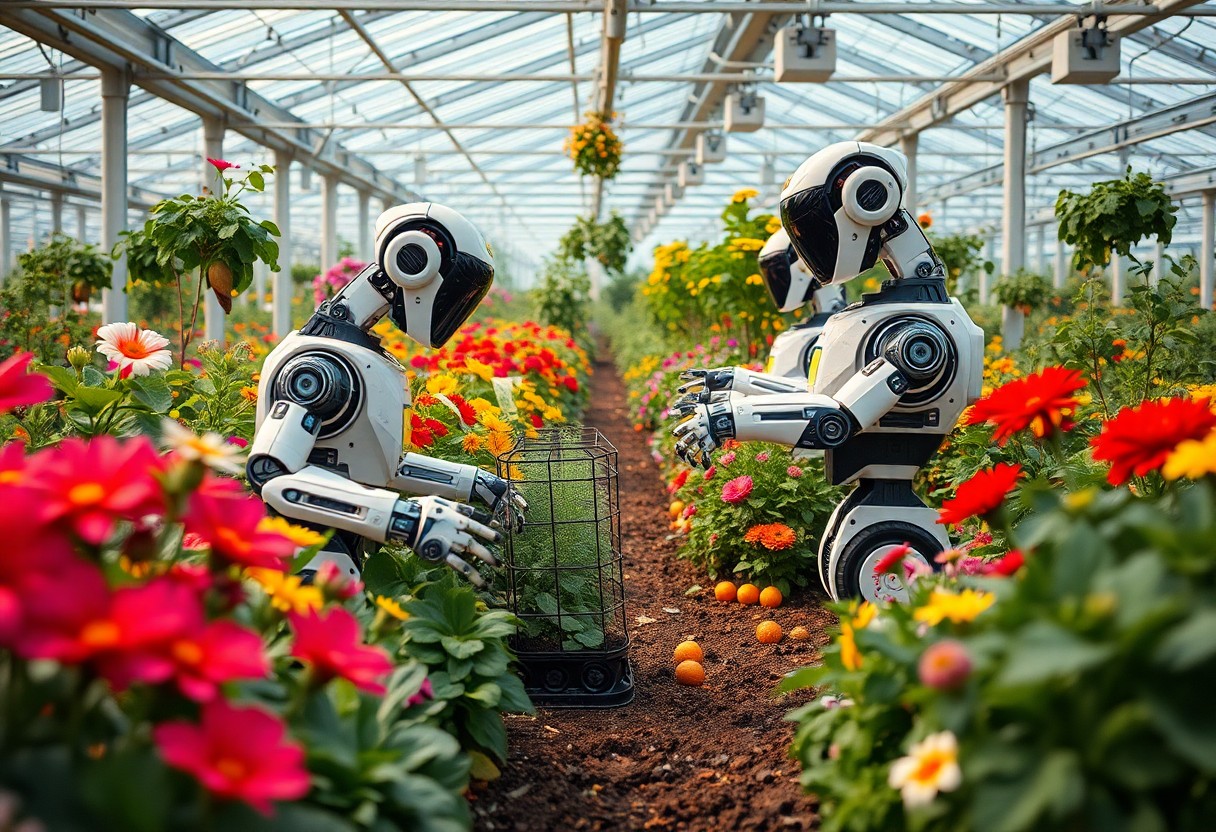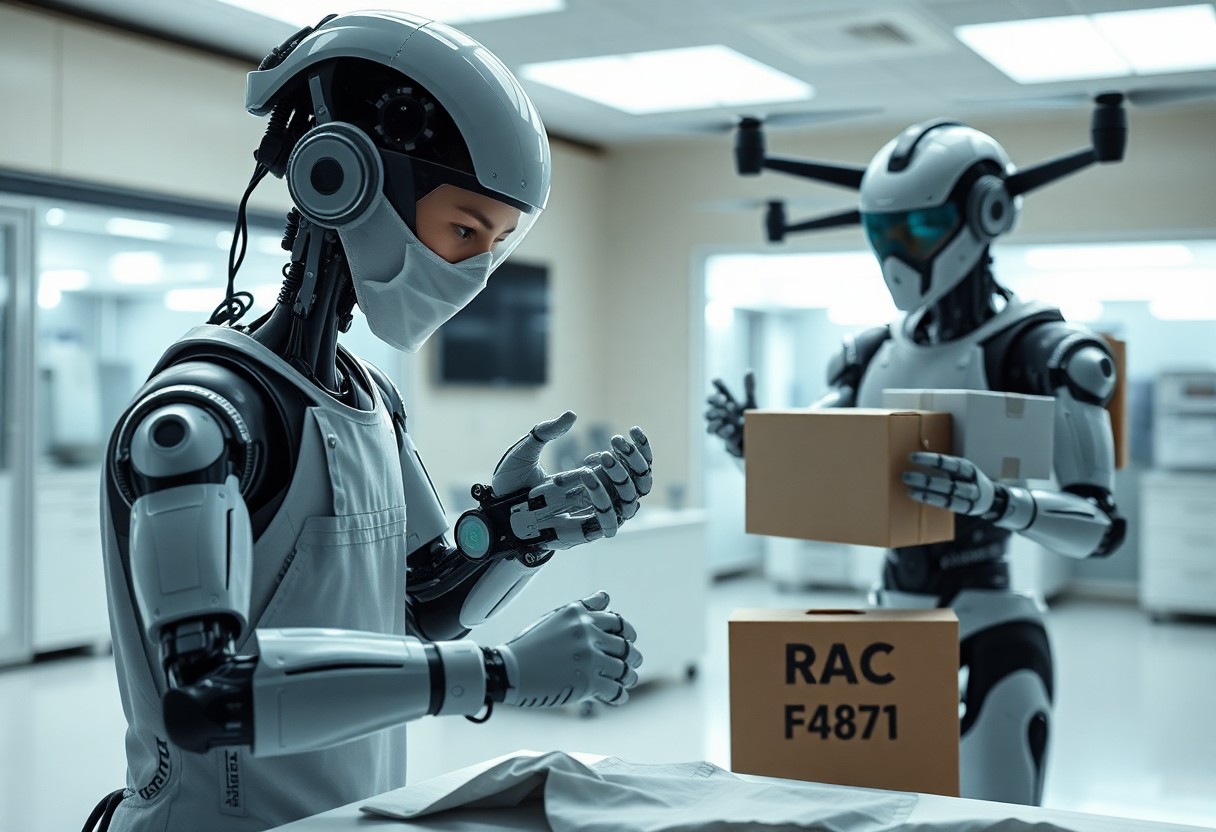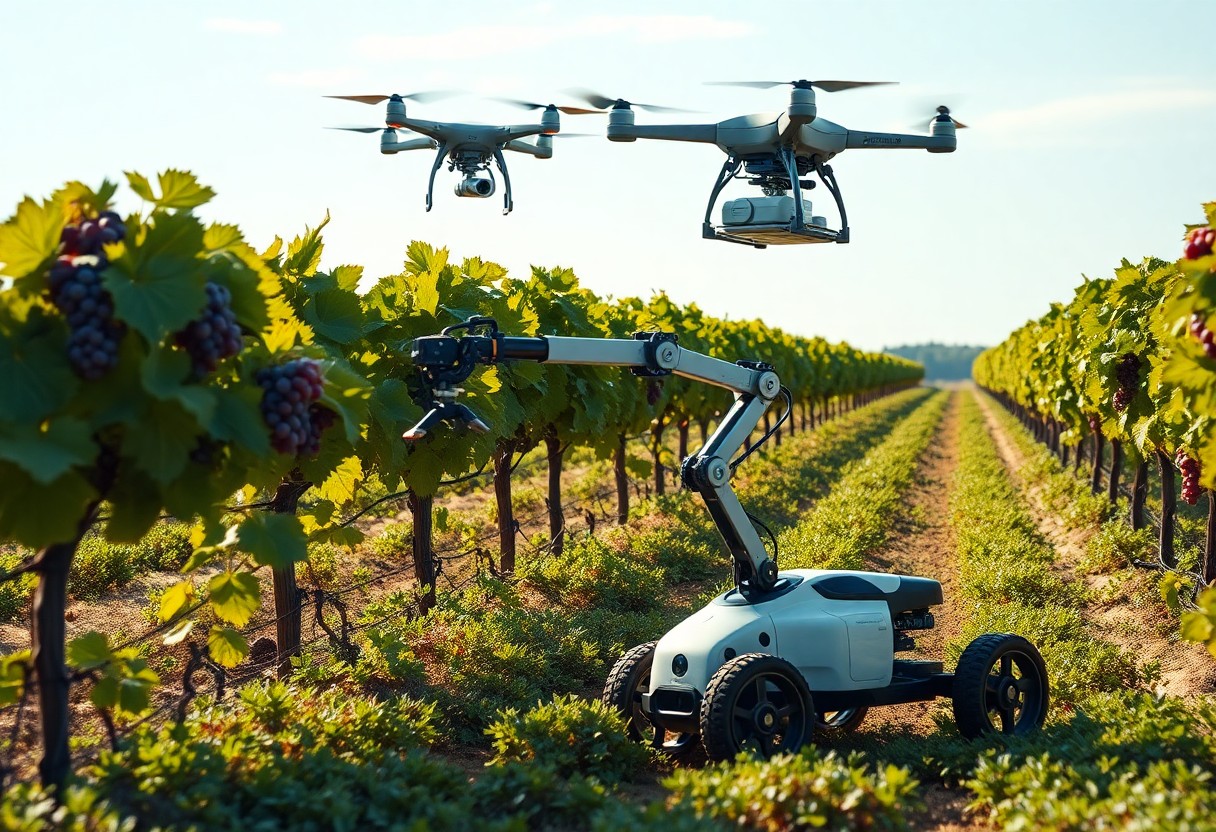Over the past few years, advancements in technology have paved the way for automatons to reshape the field of horticulture, offering you innovative tools and solutions for your gardening needs. With these intelligent machines, you can streamline tasks such as planting, watering, and monitoring plant health, thereby enhancing your efficiency and productivity. By harnessing the power of automation, you can elevate your gardening practices, reduce labor intensity, and yield better results, ultimately transforming the way you approach the art of horticulture.
Precision in Plant Care: The Role of Automation
Automated systems are transforming how you care for your plants, enabling a higher level of precision in plant management. With technology, you can monitor and respond to the needs of your garden in real-time, ensuring that plants receive the exact conditions required for optimal growth. This eliminates guesswork, reduces resource waste, and enhances crop yields, making gardening not only more efficient but also more sustainable.
Advanced Sensors and Monitoring Technologies
Using advanced sensors allows you to keep a close eye on soil moisture, temperature, and light conditions without manual checks. These sensors can communicate your plants’ needs directly to your smartphone or computer, giving you the data necessary to make informed decisions.
Sensor Types and Functions
| Soil Moisture Sensors | Measure the water content in the soil to minimize over- or under-watering. |
| Temperature Sensors | Track ambient and soil temperatures to maintain optimal growth conditions. |
| Light Sensors | Detect light intensity to ensure plants receive adequate sunlight for photosynthesis. |
| pH Sensors | Monitor soil acidity to enhance nutrient uptake and promote healthy growth. |
Smart Irrigation Systems: Watering Without Waste
Smart irrigation systems maximize water efficiency, ensuring your plants get the right amount of water without unnecessary waste. These systems can adapt to weather patterns and soil conditions, providing precision watering that supports healthy growth while conserving resources.
By integrating weather data and soil moisture levels, smart irrigation systems adjust the watering schedule and volume according to real-time needs. For instance, if a recent rainstorm provides adequate moisture, the system can delay watering, preventing both water waste and plant stress. By adopting this technology, you can save up to 50% on water usage compared to traditional methods, significantly lowering your utility bills while promoting sustainable gardening practices.
Revolutionizing Labor with Robotics
Utilizing robotics in horticulture streamlines various labor-intensive tasks, allowing you to enhance efficiency and productivity in your gardens or farms. Automated systems can handle repetitive work, freeing your time and resources for more strategic planning and creative cultivation. With a reduced reliance on human labor, especially during peak seasons, you can minimize labor costs and increase output, reshaping the way horticulture is managed and operated.
Autonomous Harvesters: The Future of Crop Collection
Autonomous harvesters are redefining crop collection, enabling you to gather fruits and vegetables with precision and speed. These advanced machines can navigate various terrains, identify ripe produce, and operate around the clock, minimizing waste and maximizing yield. With advancements in AI and machine learning, they continuously improve their efficiency, ensuring you can adapt to changing farming demands and market conditions seamlessly.
Robotic Weed Control: Reducing Dependency on Herbicides
Robotic weed control systems emerge as a sustainable alternative to traditional herbicide methods, helping you maintain healthy crops while minimizing environmental impact. These robots use advanced sensors and artificial intelligence to detect and remove weeds, enabling precise targeting of unwanted plants without harming beneficial flora. By adopting robotic solutions, you can significantly reduce your reliance on chemical herbicides, paving the way for safer, more environmentally friendly farming practices.
Robotic weed control systems offer a revolutionary approach to pest management, employing technology that recognizes the difference between crops and weeds. For instance, some models use computer vision to accurately identify and eliminate unwanted vegetation, while leaving your plants intact. This precision not only reduces herbicide usage but also lessens chemical runoff into the surrounding ecosystem. The adoption of robotics can lead to healthier soil, improved crop resilience, and a more sustainable agricultural model, giving you the opportunity to foster biodiversity while ensuring quality harvests.

Data-Driven Decisions: The Intersection of AI and Horticulture
Incorporating data analytics alongside artificial intelligence (AI) can redefine horticultural practices. Your ability to leverage real-time data for enhanced decision-making leads to optimal resource management, ensuring sustainability and productivity in your garden. By analyzing factors such as weather patterns and soil health, you can fine-tune your approach, ultimately improving yields while minimizing waste. For a deeper investigate how automation is reshaping cultivation, check out Gardening Unleashed: Exploring the Symphony of ….
Predictive Analytics for Crop Yields and Pest Management
Predictive analytics empowers you to forecast potential crop yields and identify pest outbreaks before they escalate. By utilizing historical data and environmental indicators, you can make informed decisions that enhance productivity and protect your plants. Implementing tools that aggregate and analyze field data gives you an edge over traditional guesswork, allowing for timely interventions that improve your overall results.
Tailoring Growth Strategies with Machine Learning Insights
Machine learning offers you tailored growth strategies by interpreting vast amounts of data related to your specific horticultural practices. By examining variables like plant behavior, watering schedules, and nutrient uptake, you create an optimized plan that directly reflects your unique growing conditions. This personalized insight leads to improved growth rates and resource efficiency, enabling you to cultivate a more robust and resilient garden.
For instance, using machine learning algorithms can highlight specific conditions under which particular plants thrive, guiding you on how to adjust lighting, watering, and nutrient levels for better yields. You can input data over time to refine these strategies even further, ensuring every decision is based on accurate, data-driven insights. Such advancements allow you to embrace a science-backed approach to gardening, turning what was once a trial-and-error process into a methodical pursuit of excellence in horticulture.
Sustainable Solutions: How Automatons Contribute to Eco-Friendly Practices
Automatons offer innovative approaches that promote sustainable horticulture, allowing you to engage in eco-friendly practices while maximizing productivity. These systems often come equipped with technologies that minimize waste, optimize resource usage, and assist in maintaining healthy ecosystems. By automating processes, you can reduce the demand on natural resources, ultimately benefiting both your plants and the environment.
Minimizing Resource Use Through Automation
Automation can significantly reduce water, fertilizer, and pesticide usage in your garden. Smart irrigation systems, for example, assess soil moisture levels to determine the precise amount of water needed, resulting in substantial water savings. By only applying nutrients when and where they’re required, you also cut down on excess chemical use and runoff, promoting a healthier environment.
Enhancing Biodiversity: Automated Techniques for Pollinator Support
With the aid of automatons, you can create targeted habitats that support crucial pollinators like bees and butterflies. These automated systems facilitate the strategic planting of pollinator-friendly flora and can even manage beehives without extensive hands-on labor. Such approaches boost pollination rates and support ecological diversity in your horticultural endeavors.
Implementing automated techniques to enhance biodiversity can significantly impact the health of your garden. For instance, automated drones can plant wildflower seeds in strategic patterns, creating vibrant habitats that attract pollinators. Additionally, systems that monitor and maintain native plant populations contribute to a balanced ecosystem. By fostering these environments, you not only support crucial species but also improve crop yield and resilience, paving the way for sustainable horticultural practices that harmonize with nature.
The Future of Horticulture: Integrating Automatons into Everyday Practices
Embracing automatons in horticulture represents a significant shift towards more efficient and sustainable practices across various settings. You can expect smoother processes in everything from large-scale agricultural operations to small-scale, urban gardening initiatives. Automated systems will continually collect and analyze data, optimizing everything from water usage to crop rotation. The future is designed for every grower, easing the path to achieving healthier plants and thriving green spaces.
Home Gardens and Personal Farming: Automation for Everyone
Automated gardening systems are becoming increasingly accessible, allowing you to cultivate your patches of green with minimal hassle. Compact robots can handle tasks like planting, weeding, and monitoring soil health, all while working within your backyard ecosystem. Imagine a device that waters your plants automatically when moisture levels drop or a sensor-driven gadget that alerts you when pests invade. These innovations make personal farming not only feasible but enjoyable, transforming your gardening experience.
Shifts in Workforce Dynamics: Jobs Evolving with Technology
The introduction of automation in horticulture signals a pivotal shift in workforce dynamics. As robotic solutions handle repetitive tasks, you may find new opportunities emerging in areas requiring critical thinking and creativity. Jobs may evolve to focus on overseeing automated systems, data analysis, and environmental planning. Skills that emphasize sustainable practices, environmental management, and advanced technology integration will become invaluable, allowing you to enhance your career prospects in this evolving field.
This transition fosters a more specialized workforce while reducing the demand for labor-intensive roles traditionally held in horticulture. As tasks previously handled by human hands are managed by sophisticated machines, you will see an increased emphasis on roles centered around technology, analytics, and eco-conscious management. Upskilling or re-training will equip you to thrive in this changing landscape, ensuring that your expertise aligns with the future of horticultural practices that are increasingly data-driven and efficient.
Final Words
With this in mind, you can see how automatons have the potential to transform horticulture, making your gardening practices more efficient and effective. By integrating these advanced technologies, you can streamline your processes, enhance plant care, and even gain valuable insights into your garden’s health. As you embrace this innovative approach, not only will you save time and resources, but you will also cultivate a richer understanding of horticulture, paving the way for a more fruitful and sustainable gardening experience.







